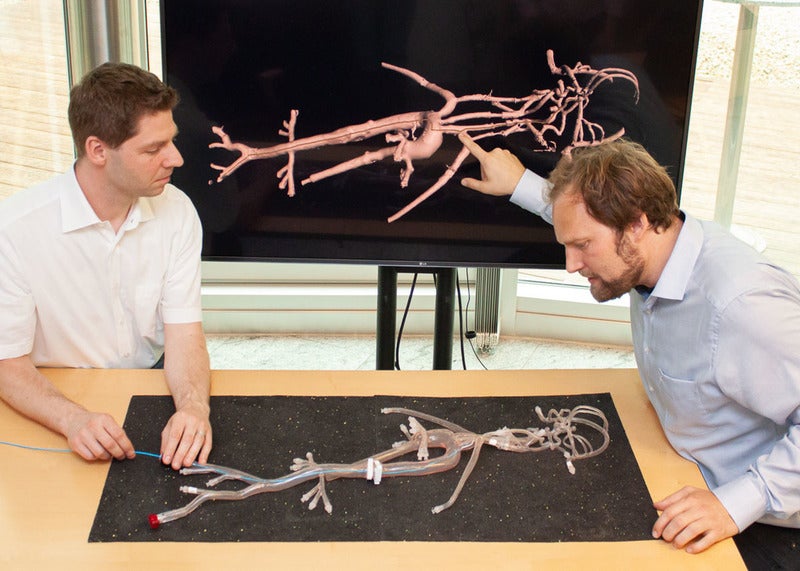
Fraunhofer Institute for Digital Medicine MEVIS in Germany has developed a new catheter system called Intelligent Catheter Navigation (IntelliCath) to enable precise navigation through the vasculature.
Endovascular interventions involve the insertion of a thin, flexible wire for navigating a catheter into the blood vessels in order to apply stents or remove blood clots.

Discover B2B Marketing That Performs
Combine business intelligence and editorial excellence to reach engaged professionals across 36 leading media platforms.
Patients have to undergo X-rays during the procedure to ensure accurate navigation of the catheter, exposing patients and doctors to radiation.
Fraunhofer MEVIS mathematician Dr Torben Pätz noted: “In addition, the X-rays merely show a 2D projection instead of a 3D image, which can sometimes impede precise localisation of the catheter.”
To address these challenges, the new catheter features an optical fibre with tiny ‘mirrors’. These mirrors reflect a portion of the light that changes colour when the fibre bends.
The change in colour can be measured by sensors and researchers will be able to obtain information on the intensity and direction of the vessel curvature.

US Tariffs are shifting - will you react or anticipate?
Don’t let policy changes catch you off guard. Stay proactive with real-time data and expert analysis.
By GlobalDataPatients are also subjected to CT or MR imaging before the intervention procedure. This image data is used by software to create a 3D model of the vessel system which is displayed on a monitor.
During the procedure, real-time data from the fibre navigation can be fed into the model and the doctor will be able to see the monitor and view live navigation of the catheter through the vasculature in 3D.
Pätz added: “[Medical device companies] expend a great deal of technical effort into trying to reconstruct the shape of the entire catheter, which can be up to two meters long. Our algorithm, however, only needs a fraction of the data to localise the catheter in a known vascular system.”
When tested in a curved labyrinth made of silicone hoses, a prototype of the IntelliCath system was able to provide the live position of the catheter with precision of up to nearly 5mm.
The researchers plan to further assess the system on a full-body phantom of the human vascular system and a pig lung. A prototype for clinical trial is expected to be available by the end of next year.
The researchers are also working on an acoustic feedback to eliminate the need for doctors to constantly view the monitor.





